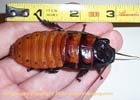"Our Hissertory"
Like many that raise hissers, I started out with a need. Ever since I was a kid and had captured insects, newts, salamanders, frogs, toads, and snakes when it came to feeding, that's when it started to cost me money. It wasn't until just a few years back that the latest pet, a Gecko, had quite the appetite. How to keep the costs down? The habitat was cheap and simple enough, but the live food supply was a continuous expense. Crickets while not hard to rear were just not as appealing as Cockroaches. If you have heard complaints that most cricket breeders or anyone that has fed crickets has are they just aren't easy to keep and the smell, well, I won't even go down that road. Mouse breeding was fun, but they smell too. The Cockroach was a clear winner, but there are many species of Cockroaches out there, which one to choose? The Madagascar Hissing Cockroach. I did my homework and found out the basic stuff about hissers like that they don't fly (a key factor in my decision), they breed quickly and easily, and because of their behavior, would be fun too. What an interesting little animal. Their territorial nature makes for some interesting battles between the males.
back to top
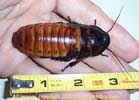 female top view
female top view 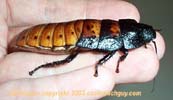 female side view
female side view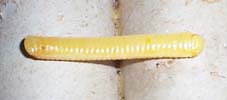 aborted ootheca (actual size 1.5 in.)
aborted ootheca (actual size 1.5 in.)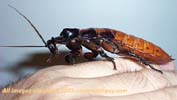 male side view
male side view